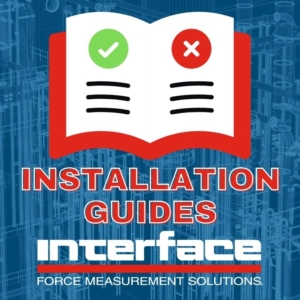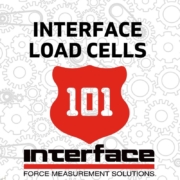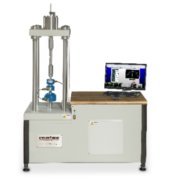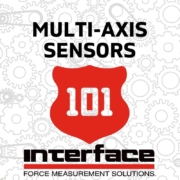Force Measurement Installation Guides
Interface is a long-time provider of the world’s most accurate and reliable force measurement products. Our sensor and instrumentation solutions are used across industries to test and monitor everything from critical infrastructure and to advanced robotics. Innovators and engineers know that our quality is unmatched. However, any measurement device manufacturer nor superior quality of a product can save users from poor performance when making this one critical mistake, poor installation.
Proper installation is one of the absolute keys to reliable and accurate test data and successful measurement programs. This is true for any type of test and measurement protocol, in particular utilizing force measurement.
Preparing for any installation for any load cell force or weighing measurement system is dependent of the integrity of the physical installation, interconnection of the components, following proper performance of the system components, and calibration.
Installation success is such an important topic, we asked Interface engineers and application experts for their thoughts on the top reasons why proper installation is critical to a successful test or vice versa. They also shared helpful guidance on why improper installation can be so damaging.
- Poor installation can lead to damaging the load cell, so to protect your investment follow the installation instructions that a accompany your product.
- When we provide performance metrics on our product, it is based on our in-house calibration. When improperly installed, you will not be hitting the performance numbers you need during use.
- Improper installation can cause overload which can not only damage the load cell, but also create unsafe working conditions.
- Installation guides not only give you the proper installation techniques, but they also provide the correct order for installation.
- And our favorite tip, and the most relatable, “Improper installation with ultimately lead to headaches!”
Installation can also vary widely between load cells and other force measurement solutions. Each product has different processes depending on the mounting components, the application being tested or monitored, the environment in which the application is being tested or monitored, and more. It is important to carefully review any materials provided with the instrumentation and sensor.
Interface provides a wide variety of installation guides, instructions and technical support online. You can find these instruction guides by visiting our support installation and manuals option.
In addition, we have resources providing clear explanation on installation and its importance. Recently, our video and blog series titled, I’ve Got A Load cell – Now What? Part 6 – Usage & Best Practices, includes in-depth information on installation and mounting.
Mechanical Installation Tips
Once you have your load cell hooked up and your instrumentation scale, it is time to put it to work. You want to review the attachment, including thread engagement and mounting. If you are threading into the live end, the center hub on the low profile load cell, make sure you have enough threads engaging into the load cell itself. We recommend that you thread it into where the studs bottom out, then back up a half a turn. Next step is to preload tension load by about 130% of capacity and jam the jam nut. We want to ensure that we do not have any repeatability issues due to thread engagement of the flexure. If you cannot provide a preload, reference the torque values in the installation guide.
Mounting to Base, Structure or Plate Tips
- Use Grade 8 or Better Hardware
- Mount to Total Flatness of .002″
- R30-33 Hardness Scale
- Follow the star patter to proper torque values
- Preinstalled Bases
Interface bases help in making integration to any assembly much easier. Interface manufactures bases with the same high-performance materials and specifications for hardness and flatness as our load cells. The bases offer threaded holes, which make it easier for mechanics like hydraulic actuators.
We also offer several references for troubleshooting. Two important considerations to review during set-up are the mechanical and electrical installation requirements.
Mechanical Installation Troubleshooting: Load cells not mounted in accordance with the manufacturer’s recommendations may not perform to specifications. It is important to review the mounting surfaces, hardware, and orientation during the installation.
Electrical Installation Troubleshooting: Proper load cell performance is depending upon the electrical system. The areas to inspect during any install are the connections, cables, settings of excitation voltage and loading of the bridge circuit.
We urge that to get the most out of your new load cell to reference the materials provided in the installation guides. If you have any questions, Interface is also here to help. Feel free to reach out to your local representatives and distributors or call us directly at 480-948-5555 to speak with an engineer to help solve your installation challenges.
Request a Quote from Interface, The World Leader in Force Measurement Solutions









